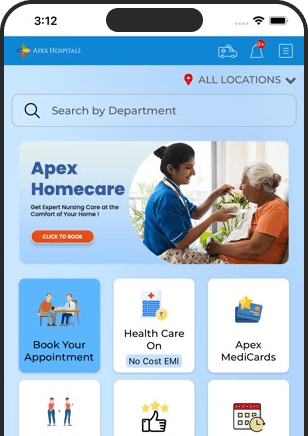
What is a bronchoscopy?
A bronchoscopy is a medical procedure that allows doctors to examine your lungs and airways. A narrow tube with a tiny camera and light at the end is used in the operation. It is inserted by the doctor through your nose or mouth, down your throat, and into your lungs.
The tube is often soft and flexible. The doctor may use a rigid box if bleeding or an object in your lungs.
Why would you need a bronchoscopy?
Doctors use bronchoscopy to diagnose lung problems. You may need one if you have:
- A persistent cough (or you're coughing up blood)
- Having difficulty breathing
- A disease or a history of infections
- Abnormal finding on a chest X-ray or CT scan
A bronchoscopy can also assist your doctor in the following ways:
- Determine the cause of a lung disease.
- Recognize a lung infection.
- Lung tissue biopsy
- Remove a blockage, such as mucous or a tumour.
- Insert a stent (a tiny tube) into an airway to keep it open.
- Treat a lung condition like bleeding or a collapsed lung.
- Examine the lymph nodes around your lungs.
How to Get Ready for the Procedure
Your doctor will give you instructions. However, in general:
- On the night before your bronchoscopy, avoid eating or drinking after midnight.
- If you take medication regularly, consult your doctor about whether you should take it on the day of the treatment. If you use aspirin or blood thinners, your doctor may advise you not to take them for a week before the bronchoscopy. They inform you not to take ibuprofen for a week before the operation.
- You will be requested to remove your glasses, contact lenses, hearing aids, dentures, or detachable bridges on the day of the treatment.
- If you intend to leave following the treatment, arrange for someone to drive you home. Because the anaesthetic can take several hours to wear off, you cannot drive.
What to Expect During the Procedure?
A bronchoscopy is performed at a clinic or hospital. You'll be lying on a table or bed in an examination or operation room. Following that:
- A nurse or technician will monitor your blood pressure, heart rate, and oxygen levels. They will spray numbing drugs into your mouth and spray or insert numbing gel into your nose. It will not taste pleasant, but the flavour will fade.
- They may administer sleep medication to you via an IV or a tube inserted into a vein.
- The doctor will slide the bronchoscope into your mouth or nose, down through your vocal cords, and into your lungs after you're at ease. You might cough. The bronchoscope may be unpleasant while inserted, but it should not harm.
- The camera provides images to a screen to assist the doctor in navigating the process. The doctor will collect tissue or fluid samples with the bronchoscope if required.
- The treatment usually takes between 30 to 45 minutes. Preparation and recovery time might add up to 4 hours. It can take an hour or more in rare circumstances where you are asleep for a bronchoscopy.
The IV will remain in place throughout the procedure if you require more. You'll be awake and able to respond to questions while feeling sleepy and calm. Or you could also be given medication that will put you to sleep. This is known as general anaesthesia.
What to Expect Following a Bronchoscopy
You may not remember much afterwards due to the anaesthetic.
The medical staff will monitor you for a few hours to ensure you have no complications. Your lips and throat may numb, but this will pass in a few hours.
You won't be able to eat or drink until the numbness disappears and you can swallow normally. Begin with sips of water and soft foods such as soup.
You may experience a sore throat or hoarseness in the next few days. Cough drops can be beneficial. If you develop any of the following symptoms, contact your doctor:
- Fever lasting more than a day
- Pain in the chest
- Having difficulty breathing
- Coughing up blood
Risks and Side Effects
Bronchoscopies are generally safe. However, there are a few risks. The doctor may administer oxygen if your oxygen levels fall during the procedure.
Following that, you may get a fever or pneumonia. You may also notice some bleeding. A bronchoscopy can result in a collapsed lung, which is uncommon. This is treatable, but you will be admitted to the hospital. Following a bronchoscopy, your doctor may request a chest X-ray to prevent complications.
Results
If you're still drowsy, ask the person driving you home to listen to your doctor's results. Your doctor may advise you when to resume taking your drugs. They should let you know when you can expect your test results. Alternatively, they may provide you with results straight away. When all of the results are ready, your doctor will notify you.
Health In A Snap, Just One App.
KNOW MORE
